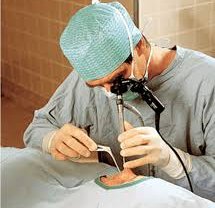It is minimally invasive procedure done endoscopically and does not require any external skin incision. This is newer technique of minimally invasive surgery possible due to development of-
- Better optics and scope
- Microsurgical instruments and illumination
- Radiography-CT SCAN / MRI
- Introduction of microdebrider
- Nasal polyposis
- Mucocoele of frontal or maxillary sinus
- Fungal sinusitis with fungal ball
- Foreign body in nose
- Chronic sinusitis unresponsive to medical treatment
- Control of epistaxis.
- Removal of angiofibroma and inverted papilloma
- Orbital abscess
- Dacrocystorhinostomy
- Repair of CSF leak and choanal atresia
- Optic nerve decompression
- Nasal bleeding
- Reduced sensation of smell
- Watering from eyes
- Adhesion of nasal cavity
- Dental pain
- Orbital haemorrhage
- Csf leak
- Blindness or diplopia
Endoscopic sinus surgery is only one approach to the treatment of sinusitis. Endoscopic sinus surgery is as safe, and possibly safer, than other methods of operating on the sinuses.The other methods of operating on the sinuses involve cuts in the face or mouth and if you feel that this maybe more appropriate in your case you should discuss this with your surgeon. In some patients an operation can be avoided by use of antibiotics and steroid medicines, again this should be discusssed.
All operations carry some element of risk in the form of possible side effects. There are some risks that you must know about before giving consent to this treatment. These potential complications are very uncommon. You should discuss with your surgeon about the likelihood of problems in your case before you decide to go ahead with the operation. Nasal bleeding, orbital complication like diplopia, csf leak which can be managed effectively.
You can expect to go home on the day of your surgery or the day after your operation depending on the size of your operation. You will need to rest at home for at least a week. If you do heavy lifting and carrying at work you should be off work for at least two weeks. You will be given instructions on when to return to the hospital for your follow-up visit
There will be little pain after procedure which can be reduced with analgesics



